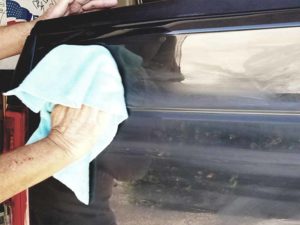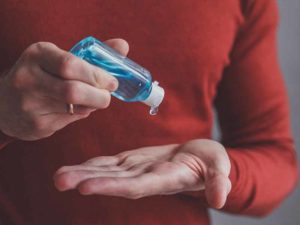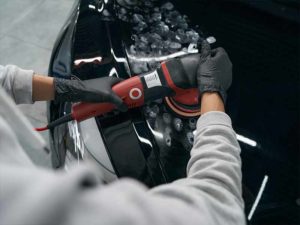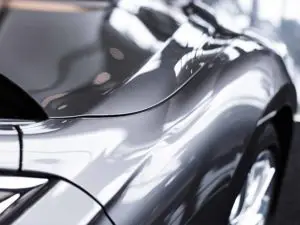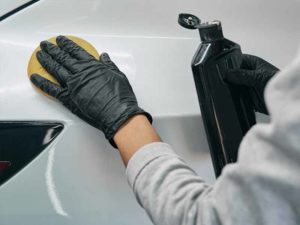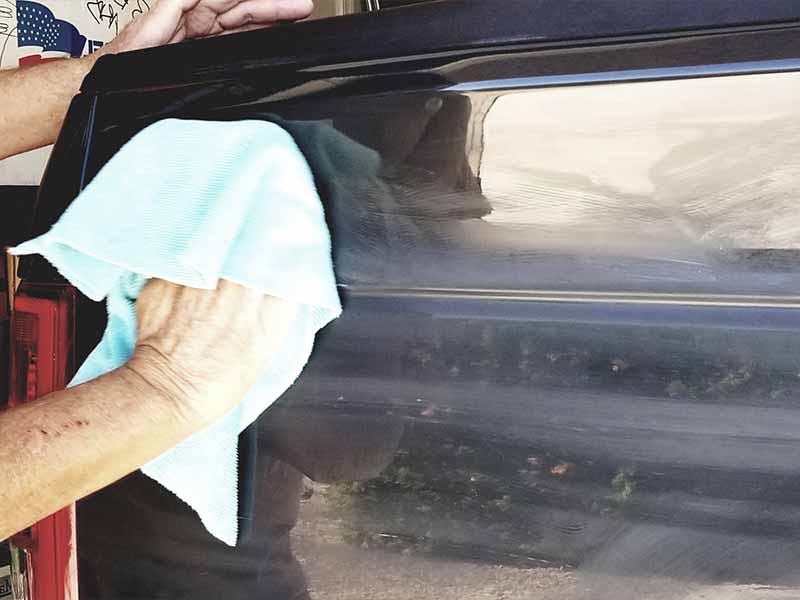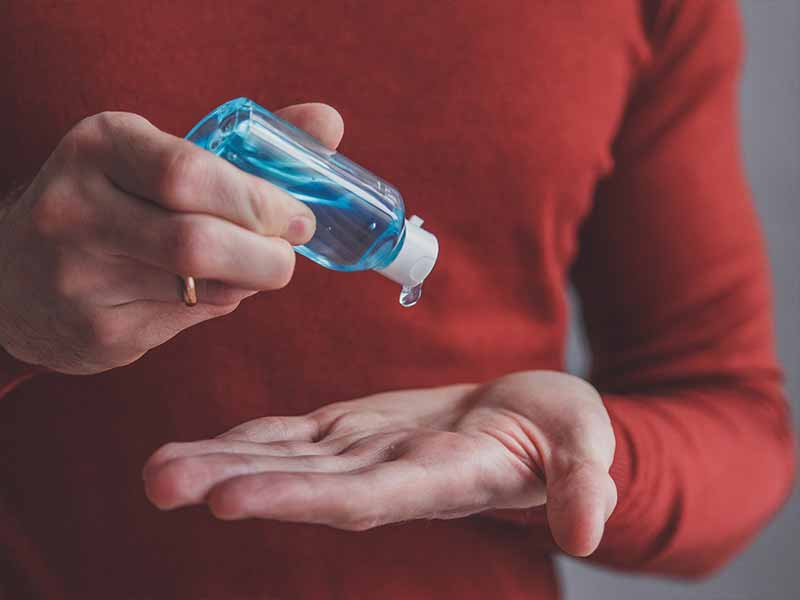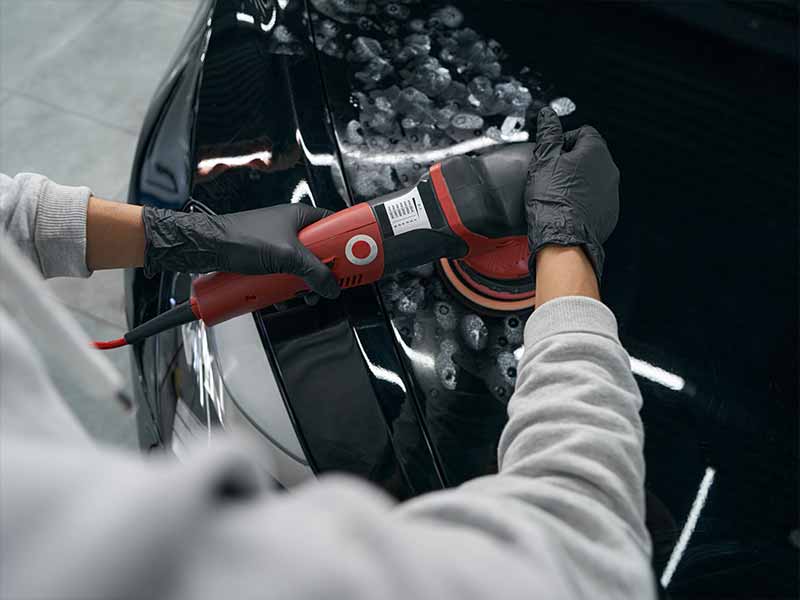Table of Contents
Bugs that have met their demise on your front bumper not only look disgusting but bug guts are acidic and will damage your paint and clear coat. You want to get them removed sooner rather than later.
Unfortunately this isn’t always practical. Most of us can’t spend all of our time patrolling our paintwork for splattered bugs. If you’re like me you’ll deal with this problem just a few times a year. I’d love to say that I clean my car weekly but I just can’t do that being married with kids.
When I have the time to tackle the smattering of bugs on the front of my car many will come off with a simple wash. That won’t get all the bugs but it does a pretty good job.
When dealing with the remaining more stubborn bug guts you will need to give them a little extra attention.
A quality bug sponge is a good step up from a wash mitt that will be safe for your finish. A bug sponge is wrapped with a mesh that is designed to grab and remove bug bits with a little soap and water.
If you still need something to help you get the last bits off that have strongly adhered to the paint you’ll want to step up to a quality cleaning agent. There are dedicated tar and bug removal chemicals available but we’ve found that most of them aren’t nearly as effective as a good paint-safe degreaser.
Phase 1 - Washing Your Vehicle
If you’re attempting to address splattered bugs on your finish the first thing you should do is give your car a good wash using a quality wash mitt. A proper wash mitt is going to be very safe for your finish and will usually remove quite a lot of bug bits.
It certainly won’t get them all unless they are very fresh. Once the guts dry and bake in the sun they can essentially bond with the clear coat since bug guts are acidic.
Washing your car or truck will not only remove a good deal of the problem but it will give you a good clean surface to work with to avoid grinding bug parts into the paint and causing unnecessary swirls or scratches.
We recommend reading our article about how to avoid scratching your finish when washing your car.
Phase 2 - Bug Sponge
Before you put away your car washing supplies, soap up a bug sponge and thoroughly massage the sponge across the area in straight lines to avoid creating swirl marks.
A bug sponge is a purpose designed cleaning tool that will more easily pick up bug parts and capture them in the mesh wrapped around the sponge.The Viking Microfiber Mesh Bug Sponge is our top pick for bug sponges.
Since their mesh is made from microfiber it is going to be a lot safer for your finish while still being aggressive on bugs.
Check the sponge often when washing and clean it off well. Bug shells can scratch your clear coat if you leave them between the sponge and the clear coat while using it to remove insect parts.
Don’t use too much force with the sponge. If medium pressure won’t get the job done we’ll step up to phase 3 to avoid doing more harm than good with too much elbow grease.
A bug sponge isn’t the ultimate solution for removing insects from your bumper but it is a good intermediate step to try before going with a degreaser.
Phase 3 - Degreaser
Instead of sawing away with a bug sponge and potentially scratching up the finish of your car or truck, an degreaser is an excellent solvent for breaking down the bug parts bonded to the paintwork while still being safe on your finish.
Just dry the area and spray it on the bug parts and allow it to dwell for a short bit. Use a microfiber towel to wipe it away and work off the bug guts. This should remove any remaining insect parts.
You may need to reapply degreaser to some of the more troublesome spots. One of the best degreasers we’ve found is Citrol 266. This citrus-based cleaner works miracles at dissolving bug guts and tar while still being safe for your finish.
It should be noted however that while a quality degreaser like Citrol 266 is ideal for removing bugs, it will also strip off any wax or paint sealant that you may have applied previously.
You’ll want to reapply a quality protection to these areas to help protect your clear coat from further damage. Paint sealants are an ideal paint protection and one we highly recommend.
Sealants last much longer than waxes making them much more appealing. Wax tends to only last a month while sealants can last years.
Phase 4 - Polishing Out Any Etching
Since bug guts are acidic it’s highly likely that after you’ve thoroughly cleaned all of the bug bits off your vehicle you’re left with some marks in your finish. If you’re dealing with just a few small marks you can likely get them out with a light polishing compound a hand polishing pad and some elbow grease.
If you have a lot of marks covering a larger area you may want to consider using a random orbital polisher. Many people are intimidated by the idea of using a polisher on their finish but you really need to worry.
Just use light pressure and a mild polish to start and work your way up to a polish that gets the issue resolved. Then work your way back down to milder polishes to finish up the job.
Phase 5 - Protecting Your Finish
If you had to resort to using a degreaser then you’ve removed any wax or sealant that was protecting your finish in the areas you applied the cleaner.
If you didn’t have a good coating of wax or sealant on your car previously you’ll want to seriously consider applying one now. A properly protected finish will make cleaning your car in the future much easier and be a sacrificial layer between the acidic bug guts and your clear coat significantly preventing the need to polish out etchings from unaddressed bug guts.
True carnauba waxes don’t last more than a month but are loved for the deep glossy wet look that most other products struggle to provide. Paint sealants can literally last up to 2 years though most last around a year.
We highly recommend Wolfgang Deep Gloss Paint Sealant It is one of the longest lasting paint sealants, is easy to apply, and looks nearly as good as some of the best waxes.
Unless you’re in a concours competition, wax likely isn’t worth your time and effort.
Helpful Links
Conclusion
Bugs will damage your clear coat by leaving etchings from their acidic guts so cleaning them off as quickly as possible is the best course of action. If a thorough wash doesn’t do the job and a bug sponge still doesn’t get them completely removed, you may have to step up to a quality degreaser.
We don’t recommend messing around with solvents branded as tar and bug removers. In our experience these products just aren’t up to the task surprisingly. They can get the job done but degreaserss like Citrol 266 are orders of magnitude more effective.
Spray a little on and work at it gently with a microfiber rag and after allowing it to sit for a bit and you should be able to easily remove even the most stubborn bug guts.
Once the bugs are removed they may have left some etching into the clear coat behind due to their acidness. You may want to polish out these etchings to properly complete the job and leave your car or truck looking pristine.
While degreasers are effective at removing bugs, it will also remove any wax or paint sealant as well so be prepared to reapply your wax or sealant of choice.
If you having been waxing or using a paint sealant we highly recommend using a quality paint sealant to help prevent future bug splatters from damaging your clear coat. Not only that but a good sealant will make cleaning bugs off your vehicle far easier next time.


